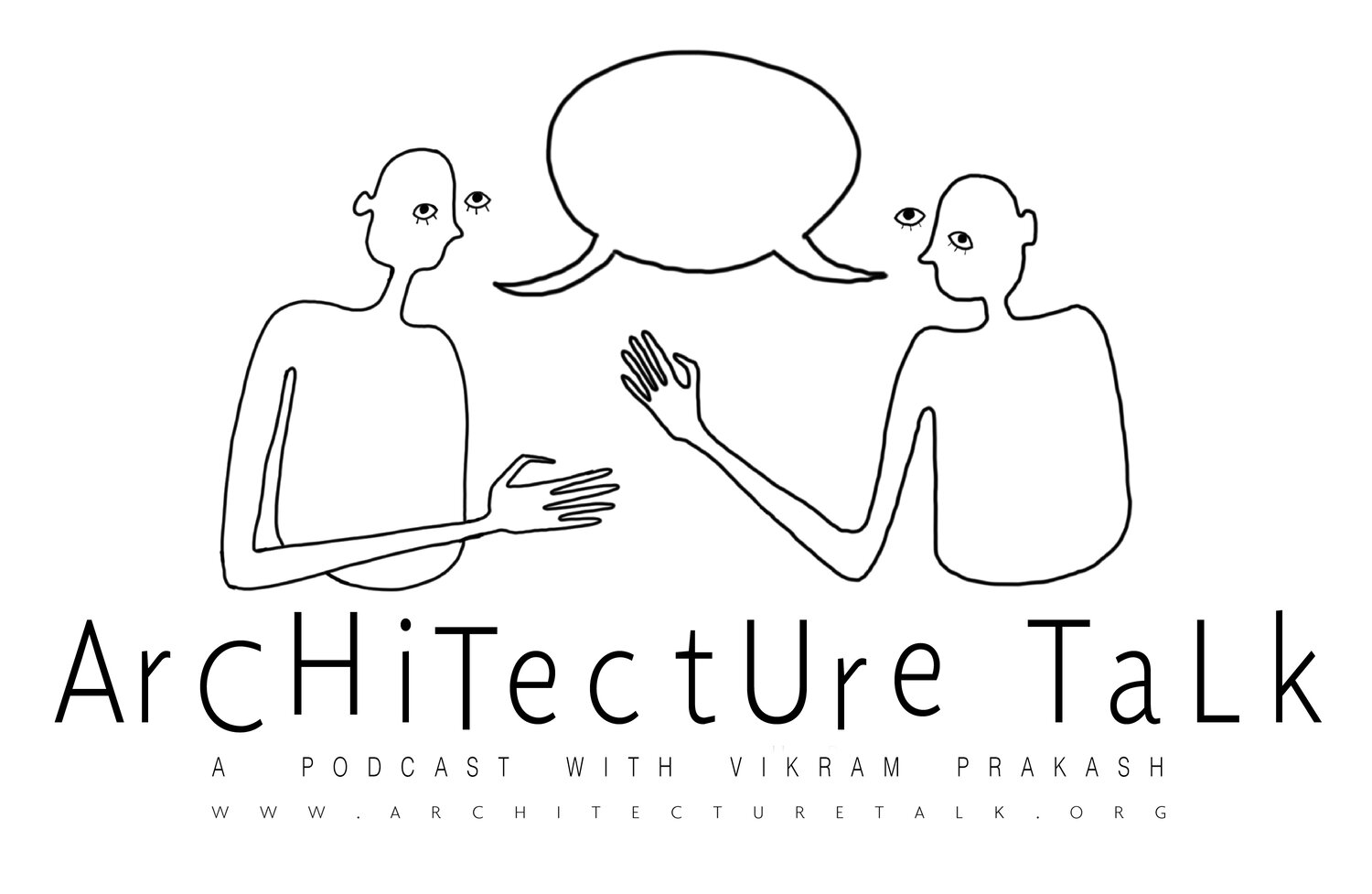57. Modernism, Utopia, and living the catastrophe with Anthony Vidler
“For me, Modernism is the defensive realization that we are already on a course to a kind of auto destruction, wether or not we know when it will be or wether or not we know what it will be, we know it is not going to be kind”
This week, we investigate settlement, agency, pedagogy and architecture's tireless hope for utopia with esteemed professor of architecture history and criticism at The Cooper Union, Anthony Vidler.
Image: "Warped Space", Anthony Vidler. MIT Press, 2002
Timestamp Outline
2:00 Vikram and Anthony discuss what makes thesis reviews at the Cooper Union different and Cooper’s pedagogy at large, referencing the tremendous influence of John Hejduk (Dean 1975- 2000)
3:33 Why do we emphasize the architectural precedent study?
5:53 How postmodernism translated so literally in architecture, siting the example of the Palladian facade of Venturi’s mother’s house, Vanna Venturi Home.
6:56 Anthony references Heidegger and Hegel’s developments of how we understand history through an academic lens.
Much of the critique Anthony is making here, especially regarding the “technologizing” of sustainability is very similar to arguments made by previous guests, Dilip da Cunha and Daniel Barber
7:09 Here Anthony references chronological narratives of the Anthropocene, suggesting we embrace the more complex and fluid narratives like the one Donna Haraway makes here
7:40 Anthony references Enterprises of Survival, a recent article published by e-flux that embraces “living the catastrophe”
8:55 Comparing our current climate concerns to the concerns of Friedrich Engels regarding the working class in Manchester
9:47 Discussion of Voltaire’s Essay on the Lisbon earthquake
10:40 “For me, Modernism is the defensive realization that we are already on a course to a kind of auto destruction, wether or not we know when it will be or wether or not we know what it will be, we know it is not going to be kind” - AV
11:03 “So what is the project of utopia?”- VP, Anthony describes the construction of, “…idealized worlds outside of the worlds we know…” (Anthony) referencing Thomas More’s Utopia and the classic work of literature, Robinson Crusoe
12:01 Anthony suggests that this idea of, “…Utopia as a settlement plan,” was clearly demonstrated in the Missions in Paraguay
12:29 “…there is nothing in Plato that is not about greek expansion…”- AV
13:22 Anthony expands into a brief discussion of aesthetics describing Hegel’s symbolic moment
15:02 “What is agency in [the narrative in which we are taught to live]? What is architectural agency?” - VP
15:36 Anthony references Donna Haraway’s, Staying with the Trouble, as one way of understanding how we are already living the catastrophe.
15:43 “…the problem, with architecture, is that architecture has always a narrative that has an agency within its discipline…it has its historical roots and its historical, continuous transformation…” AV (Here Anthony references the legacy of Vitruvius in the tradition of architectural theory and its constant translation, in particular through the Ecole de Beaux arts)
16:34 Anthony references James Stirling’s Leicester Engineering building
18:14 Anthony returns to the e-flux article
19:35 Discussion of atelier Bow Wow’s exhibit, “The Japanese House: Architecture and Life after 1945” (in passing Vikram and Anthony reference here the situationists)
22:06 Anthony recalls the initial spark of his interest in Utopia, referencing the influence of British architecture critic, Martin Pawley
22:48 Transitioning into Anthony’s early and academic life, he highlights his interests in the works and thinking of Boullée and Ledoux and the resulting theories of Foucault
23:47 “…that’s what happens when you write the cardinal book on the enlightenment in architecture…” -VP
30:24 Anthony describes his early academic interests at Cambridge siting Sir Leslie Martin’s influence on the university and some of the people he brought in, including; Ben Nicholson, Naum Gabo, Antoine Pevsner and Colin St. John "Sandy" Wilson
31:41 Anthony continues his list of incredible instructors and critics: Alison and Peter Smithson, Paolozzi, and Henderson
32:03 Anthony recalls his first trip to Venice as a majoring turning point in his interest, particularly his fascination with Ruskin’s, Stones of Venice which continued along Anthony’s friendship with historian, Manfredo Tafuri.
33:33 Anthony describes his first interaction with his tutor at Cambridge, Colin Rowe and PhD student, Peter Eisenman
38:00 Vikram asks Anthony about trans-culturality and if he considers himself an American. Anthony starts off by referring to conversations with another Cambridge friend, TJ Clark. He goes on to describe the great opportunities of academia in the US, like his involvement with Kenneth Frampton and the history/theory program at Princeton and the value of research instilled by Dean Robert Geddes
41:49 Anthony references some of his PhD students from Princeton, like Mary McLeod and Patricia Morton and their role in helping bring speakers like Gayatri Spivak to the department
43:23 Anthony describes the importance of theory in the architecture department referring to cultural historian, Carl Trocki, Ana Maya, Tony Grafton, Bob Donson and French Historians Mona Ozouf and Jacques Ozouf
45:27 Anthony recalls a fellow Princeton teacher, Jean A Betou, who would go on to teach Robert Venturi, Charles Moore, William Turnbull Jr. and inspire Moore to do his thesis on Architecture and Water
47:38 Why interdisciplinary thinking is critical to teaching and practicing architecture
50:16 Anthony discusses Modernism and Postmodernism and the trouble with naming references Pevsner and his PhD student Reyner Banham
51:39 “…the poor graduate students that have to read Deleuze without having a single notion that Deleuze in The Fold is talking about litmus…” - AV
58:19 In his closing comments, Anthony describes how he aims to collect a career’s worth of thoughts into something like Banham’s “Theory and Design in the First Machine Age”






